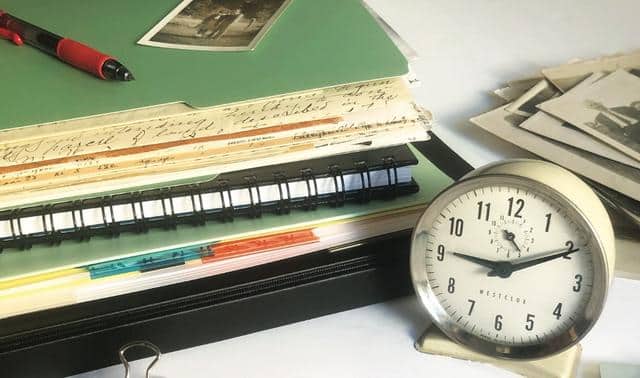Q: How does one handle computer files for a very large body of genealogical research? Should I create one giant database for all family lines or create separate databases for each line?
A: There’s no hard-and-fast rule here, and the answer partly depends on the capacity and capabilities of your computer system. If the file is so large that working with it becomes sluggish—or if navigating the various branches of your tree gets cumbersome—it’s probably time to split your database into smaller segments. Similarly, if backing up your file—and you are backing it up on a regular basis, right?—takes too long or exceeds the capacity of your storage media, you’ll want to divide your tree.
Typically, it’s not the actual pedigree files that take up so much hard drive space or computer memory (my Dickinson family file of more than 2,000 names plus lengthy notes barely tops 1 MB). Rather, it’s the multimedia elements associated with your family tree: family photos, images of source material, even audio and video elements.
If you prefer to keep your pedigree all in one file, but it’s getting unwieldy, consider using only relatively lower-resolution images and other multimedia in your actual family file, while keeping high-res versions in separate files and folders. Think of what you actually do with the images in your genealogy software: If you’re viewing them only on screen, a resolution of 72 dots per inch (dpi) is all you need. If you want to print them as part of a visual tree, store the images in your program at 300 dpi, but make sure they’re no bigger than the size at which you’ll print them.
When it comes to breaking down your database by family lines, the simplest and most obvious choice is to compile your father’s and mother’s families in two separate databases. After all, these families (usually) have only one point in common—you. You could take the same approach one generation further back and create four databases, one for each of your grandparents’ families. But the further back in time you start splitting your files, the more likely you’ll run into families that intermarried—information you’d then have to record in both databases.
For more advice on how to get beat the brick wall in your genealogy research, see Family Tree Magazine‘s book 101 Brick Wall Busters: Solutions to Overcome Your Genealogical Challenges, the Family Tree Magazine webinar recording Brick Wall Strategies: Advice and Ideas for Getting Past Research Dead Ends, and the Family Tree Problem Solver, all available on Family Tree Shop.
Stumped? Ask our experts! Send questions to FTMletters@fwmedia.com or post them at familytreemagazine.com/forum. Sorry, we can’t respond personally or answer all questions.
From the September 2010 Family Tree Magazine




